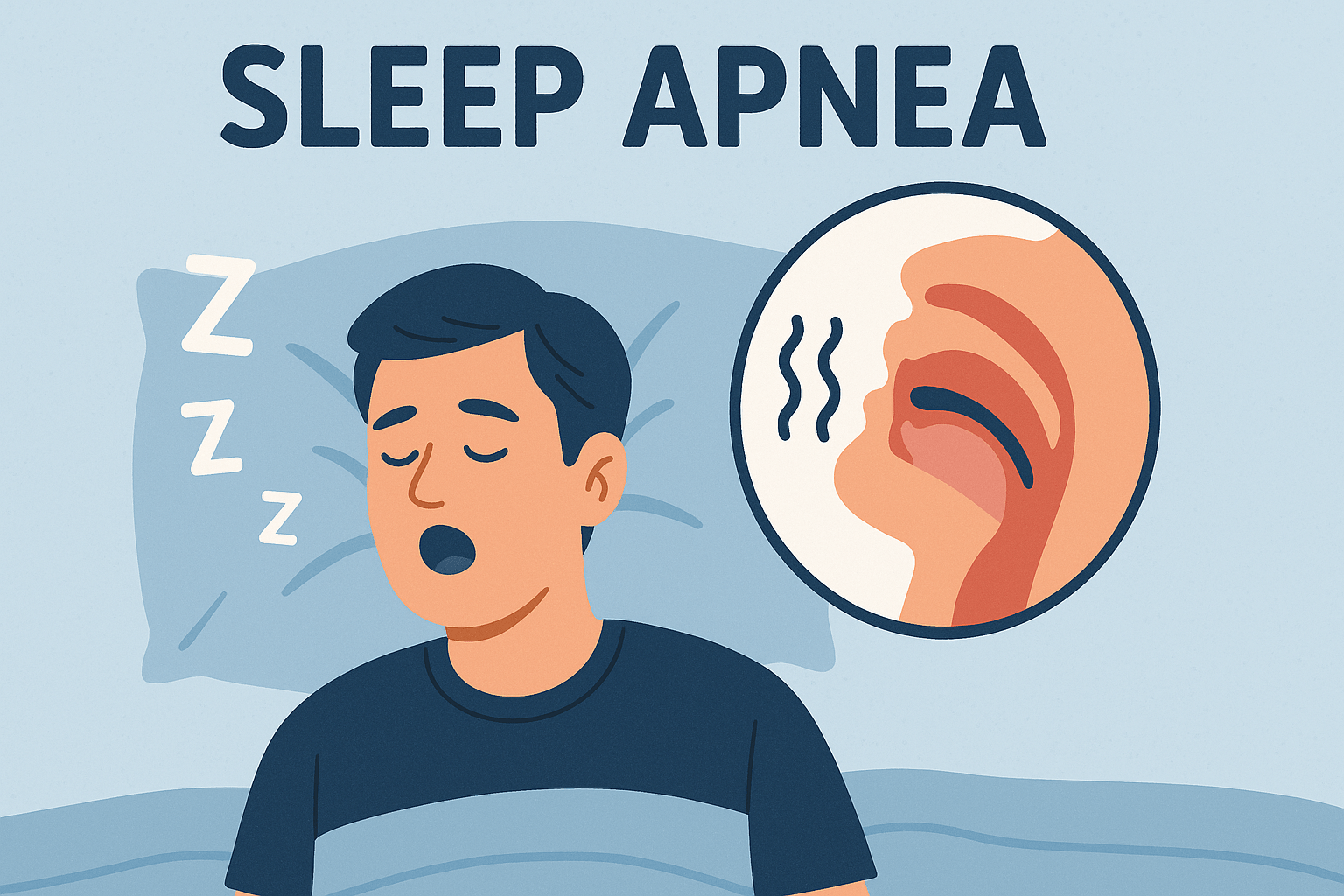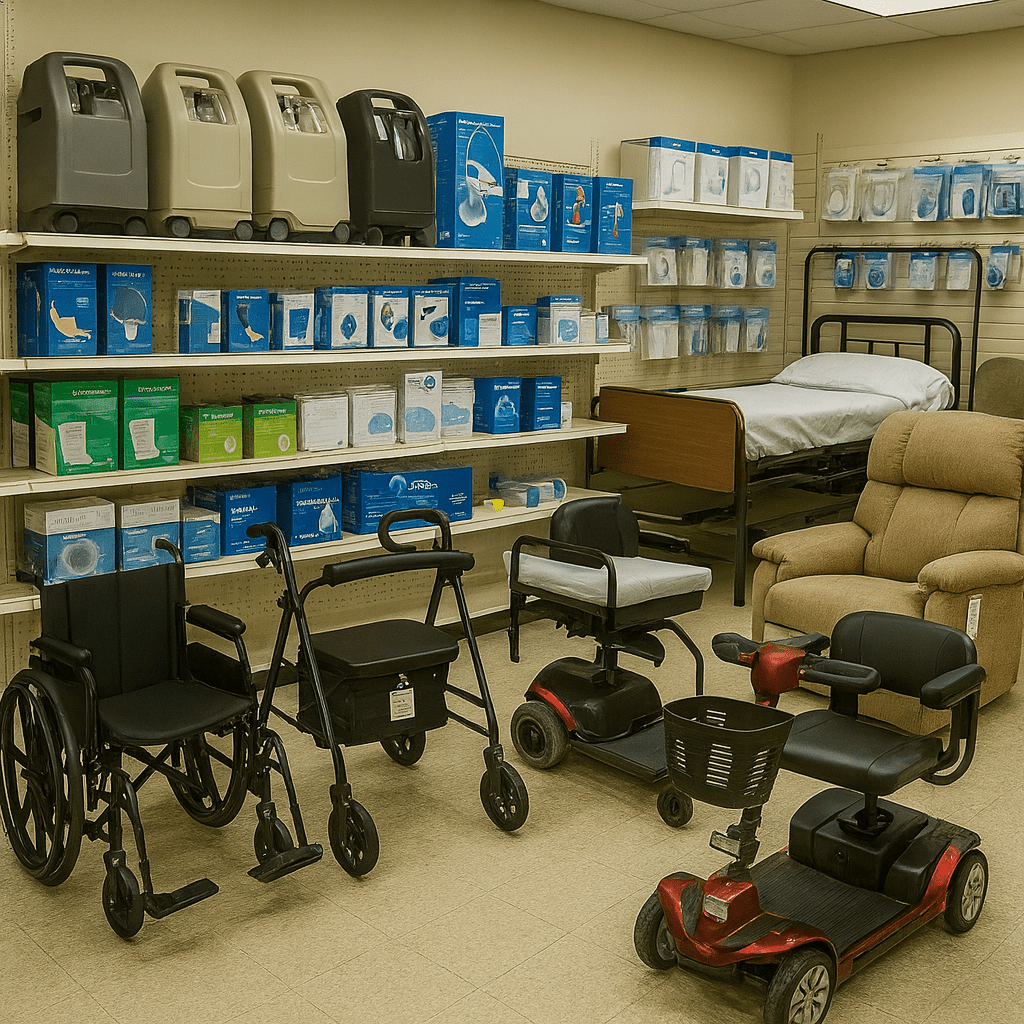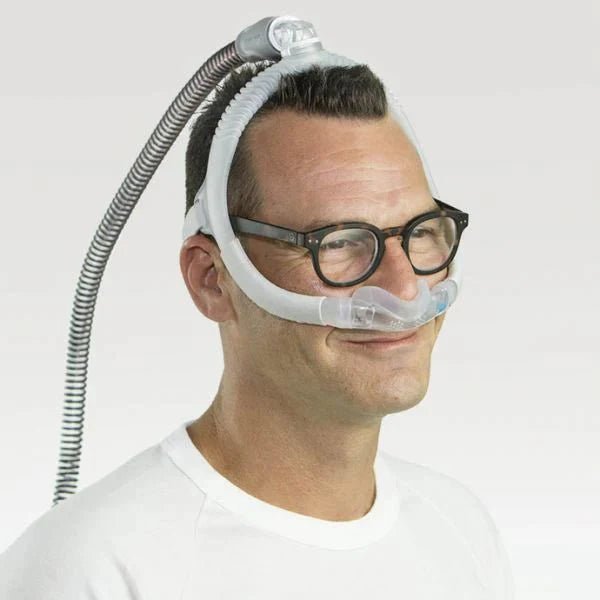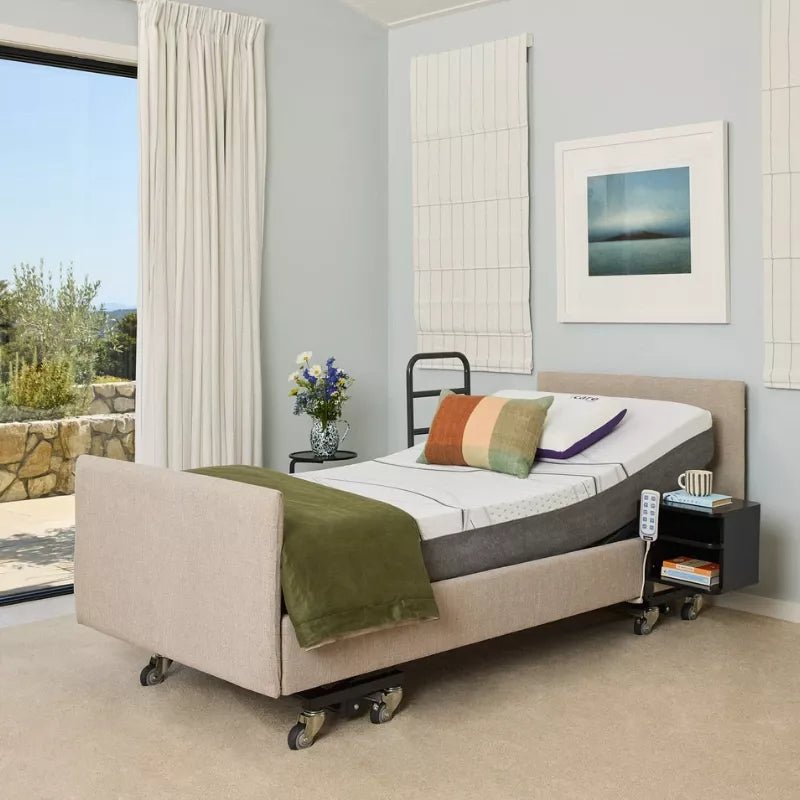Sleep apnea is a serious sleep disorder that impacts breathing and overall health. At MedEquip Shop, we are committed to helping patients and caregivers understand the underlying causes of sleep apnea, how to recognize it, and what effective treatments are available. In this guide, you’ll learn everything you need to know about managing this condition—from CPAP therapy to lifestyle changes—so you can make informed decisions about your health.
What is Sleep Apnea?
Definition and Medical Overview
Sleep apnea is a condition where a person’s breathing repeatedly stops and restarts during sleep. These “apneas” (complete pauses) or "hypopneas" (partial blockages) disrupt restful sleep and reduce oxygen flow to vital organs.
Types of Sleep Apnea
Obstructive Sleep Apnea (OSA): The most common type occurs when throat muscles relax, narrowing or blocking the airway.
Central Sleep Apnea (CSA): Breathing interruptions happen when the brain doesn’t send the right signals to breathing muscles.
Complex (Mixed) Sleep Apnea: A combination of OSA and CSA, where both physical obstructions and neurological factors play a role.
How Sleep Apnea Affects the Body
Interrupted breathing causes oxygen dips, raising blood pressure and stressing the cardiovascular system. Over time, this increases risks for heart disease, stroke, diabetes, and cognitive impairment.
Sleep Apnea vs. Snoring – Key Differences
While loud snoring is a common symptom, not everyone who snores has sleep apnea. Apneas involve breathing interruptions, gasping, or choking—features absent in benign snoring.
What Causes Sleep Apnea?
Physical Causes
Excess weight, a thick neck, or anatomical features (like a narrow airway, enlarged tonsils, or small jaw) can constrict airflow.
Neurological Factors
In CSA, the brain fails to coordinate breathing. In OSA, neurological control of the airway muscles may be inconsistent.
Genetic & Lifestyle Contributors
Obesity, alcohol, smoking, and sedative use increase risk. Family history and craniofacial structure also play roles.
Risk Factors
Men over 40 with higher BMI, large neck circumference, or a family history are at greater risk.
Recognizing the Symptoms of Sleep Apnea
Common Signs
- Loud, persistent snoring
- Gasping or choking during sleep
Daytime Symptoms
- Excessive fatigue, morning headaches, brain fog, and difficulty concentrating
Long-Term Health Risks
Untreated sleep apnea increases the risk of heart disease, hypertension, stroke, type 2 diabetes, and metabolic syndrome.
When to See a Doctor
If you experience persistent loud snoring, frequent nighttime waking, morning headaches, or daytime sleepiness, it’s crucial to consult a sleep specialist.
Diagnosis and Sleep Study Tests
Home Sleep Apnea Tests vs. Lab Studies
Home tests monitor breathing, oxygen levels, and airflow.
Lab-based studies (polysomnography) offer thorough monitoring—including brainwaves, eye movement, ECG, airflow, and muscle tone—and remain the gold standard for OSA.
What to Expect During a Sleep Study
In a sleep lab, you’ll be hooked to sensors on the head, chest, legs, and fingers. The technician monitors and scores apneas and hypopneas to determine severity (AHI index).
Reading Your Sleep Test Results
The Apnea-Hypopnea Index (AHI) is critical:
- AHI <5 = Normal
- 5–15 = Mild
- 15–30 = Moderate
- 30 = Severe
Role of Sleep Specialists
Pulmonologists, ENT surgeons, or neurologists analyze results and recommend tailored treatment options.
Sleep Apnea Treatment Options
CPAP Therapy – How It Works and Who Needs It
Continuous Positive Airway Pressure (CPAP) delivers a steady stream of pressurized air to prevent airway collapse. It’s the most effective treatment for moderate to severe OSA and is proven to eliminate most obstructive events and improve sleep quality and related conditions.
Check out our CPAP machines!
Alternatives to CPAP
- BiPAP (BPAP): Two pressure settings for inhale and exhale—useful for patients uncomfortable with CPAP continuous flow.
- APAP (Auto-adjusting CPAP): Automatically adjusts pressure on a breath-by-breath basis.
- Oral Appliances: Mandibular advancement devices reposition the lower jaw, helpful for mild to moderate OSA.
Lifestyle Modifications
- Weight loss can significantly reduce symptoms.
- Sleeping position: Side sleeping often reduces apneas.
- Avoid alcohol/sedatives before bedtime, and quit smoking.
Surgical Options
- UPPP (Uvulopalatopharyngoplasty): Removes soft palate tissue to widen the airway.
- Inspire Therapy: A nerve-stimulation implant that supports tongue muscle function.
- Jaw surgery (maxillomandibular advancement): Moves facial bones to expand airways.
Living with Sleep Apnea
Tips for Adjusting to CPAP Machines
- Gradually build tolerance—wear mask during downtime before bedtime.
- Choose comfortable masks, and use humidifiers to prevent dryness.
Maintenance of Equipment and Hygiene
- Clean masks and tubing regularly to avoid infections.
- Replace filters and components per manufacturer guidelines and MedEquip’s recommendations.
Managing Travel and Sleep Schedule
- Use compact travel CPAP units like ResMed AirMini.
- Bring power adapters, distilled water for humidifiers, and extra batteries.
Support for Caregivers and Families
Educate everyone on device use, mask care, and the importance of therapy consistency. Encourage communication if symptoms worsen.
Preventing Complications from Untreated Sleep Apnea
The Importance of Early Diagnosis
Detecting sleep apnea early prevents serious health complications and cognitive decline.
Monitoring Related Health Conditions
Regular monitoring of blood pressure, glucose, and heart function is essential with diagnosed sleep apnea.
Mental Health and Quality of Life
Effective treatment often results in improved mood, concentration, and overall well-being.
Importance of Consistent Treatment
Sleep apnea is chronic. Consistency—whether using CPAP, APAP, or oral devices—is key for long-term health benefits.
FAQs About Sleep Apnea
It may resolve in mild cases through lifestyle changes, but moderate to severe cases typically require ongoing therapy.
Is Snoring Always a Sign of Sleep Apnea?
No. Snoring is common and doesn’t always indicate apneas. However, combined with gasping or daytime sleepiness, it warrants evaluation.
What Happens If I Don’t Treat Sleep Apnea?
Untreated sleep apnea increases risks for cardiovascular disease, stroke, diabetes, accidents, and cognitive decline.
Is Sleep Apnea Covered by Insurance?
Many insurance plans cover diagnostics and CPAP supplies, but policies vary. Check your provider’s coverage.
Final Thoughts and Resources
Encouragement for Diagnosis and Treatment
If you suspect sleep apnea, consult a certified sleep specialist. Early treatment leads to dramatic improvements in sleep, health, and quality of life.
Trusted Resources for Patients and Families
-
American Academy of Sleep Medicine
-
National Sleep Foundation
-
MedEquip Shop’s CPAP support and supplies and sleep study rental services
How to Find a Local Sleep Specialist
Speak with your primary care provider for a referral, or search accredited sleep clinics online.
Tools and Apps to Monitor Sleep
Apps like ResMed MyAir, Fitbit, and Oura ring can help you track sleep patterns—but these should complement, not replace, medical evaluation.
Summary
At MedEquip Shop, we believe education and access to the right tools can transform lives. “Understanding Sleep Apnea” offers a complete overview of this sleep disorder, from causes and symptoms to diagnostic tests and modern treatment solutions. Whether you’re adjusting to a CPAP machine or exploring alternative therapies, taking action today can lead to better rest, sharper focus, and long-term health. Contact us today!









